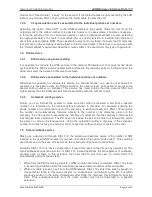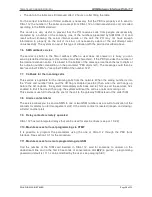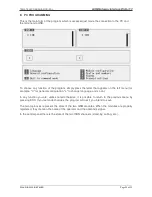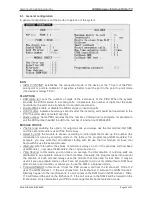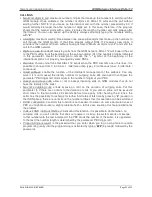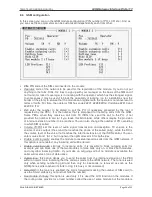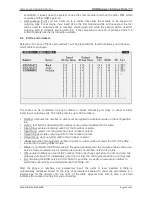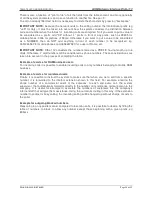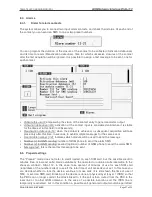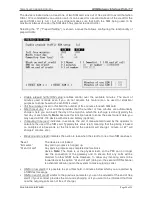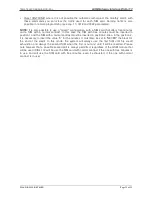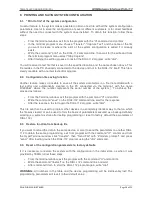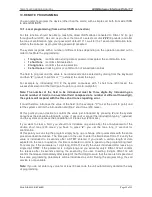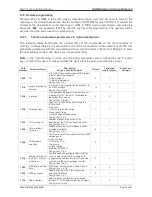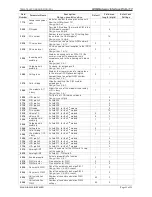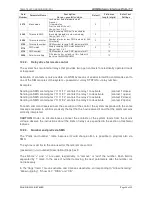
TEMA TELECOMUNICAZIONI SRL
GSM Gateway Interface DIAL-112
MAS-DIAL112-REV06EN
Page 19 of 35
module and "Use module 1 if busy" for the second. If the dialed number is not covered by the LCR
table of any module, DIAL-112 you still use the first module to allow the call.
7.3.4.
CLI presentation service associated to the individual prefixes or numbers
Activating the option "Hide CLIP" in the GSM parameters, the system hides the CLI for all the
outgoing calls to the called number. It is possible, however, in cases where it becomes necessary,
to force the sending of CLI to certain area codes or even to individual numbers of users, selecting
the appropriate field in the table. For example, this is a useful function to facilitate the activities of
users that uses corporate RAM. Those particular users (and only them) that gets the CLI will know
that someone in the company is calling them or tried to reach them. This feature in conjunction with
the "Smart callback" service later described, makes DIAL-112 essential for this type of application.
7.4. DISA service
7.4.1.
DISA service as general setting
It is possible to configure the DISA service in the General Parameters so that goes for the whole
system. With the DISA service enabled, will be offered to the incoming calls an inviting tone so the
caller can select the extension that want to achieve.
7.4.2.
DISA service associated to the individual prefixes or numbers
Otherwise it is possible to configure this service in a specific manner on a user by user basis. For
example it is possible to deny the DISA service to the general level, but enable it only for some
special calling number (or prefixes). This service has lower priority than the general DISA and
higher priority than the DISA service’s direct association with the number to call.
7.4.3.
Automatic routing service
Finally, you can instruct the system to make sure that when is received a call from a specific
number, it is forwarded to the internal extension shown in this field. For example, entering the
phone number of a commercial agent of the company, to each and every call, DIAL-112 recognize
the number and automatically forwards directly to the number of its reference person in the
company. It is often useful to associate the numbers of customers into the company's internal staff
that will give them assistance. The PO does not receive the call so he must not forward the call to
the person or group of reference work. Using the automatic routing in this way, if the extension
number to contact is busy, the external call is hunged up, without charge of costs to the caller.
7.5. Smart callback service
Making an outgoing call through DIAL-112, the called user becomes aware of the number of SIM
inserted in the used GSM module (if you have not enabled the option "Hide caller"). This could be
useful because, in the case of missed call, the called user might want to recall later.
Normally DIAL-112 in its basic configuration, forward this recall to the PO as any generic call. The
smart callback service (see par.8.1) of DIAL-112 instead optimizes the management of callbacks,
sending each of them to the extension that had tried to call that user. In detail, DIAL-112
automatically performs these steps:
•
When from the PBX is making a call to a GSM module and it does not answer, DIAL-112 stores
in its own large callback table the association between internal number caller and called.
•
When a module receives a call from the GSM network, DIAL-112 verify if the caller is present in
this particular table: in this case consider it a callback call, not forward to the PO, but within
previously written in the table. Immediately after DIAL-112 removes this information from the
table. Thus, subsequent calls from the same number will not be forwarded to a specific
extension.















